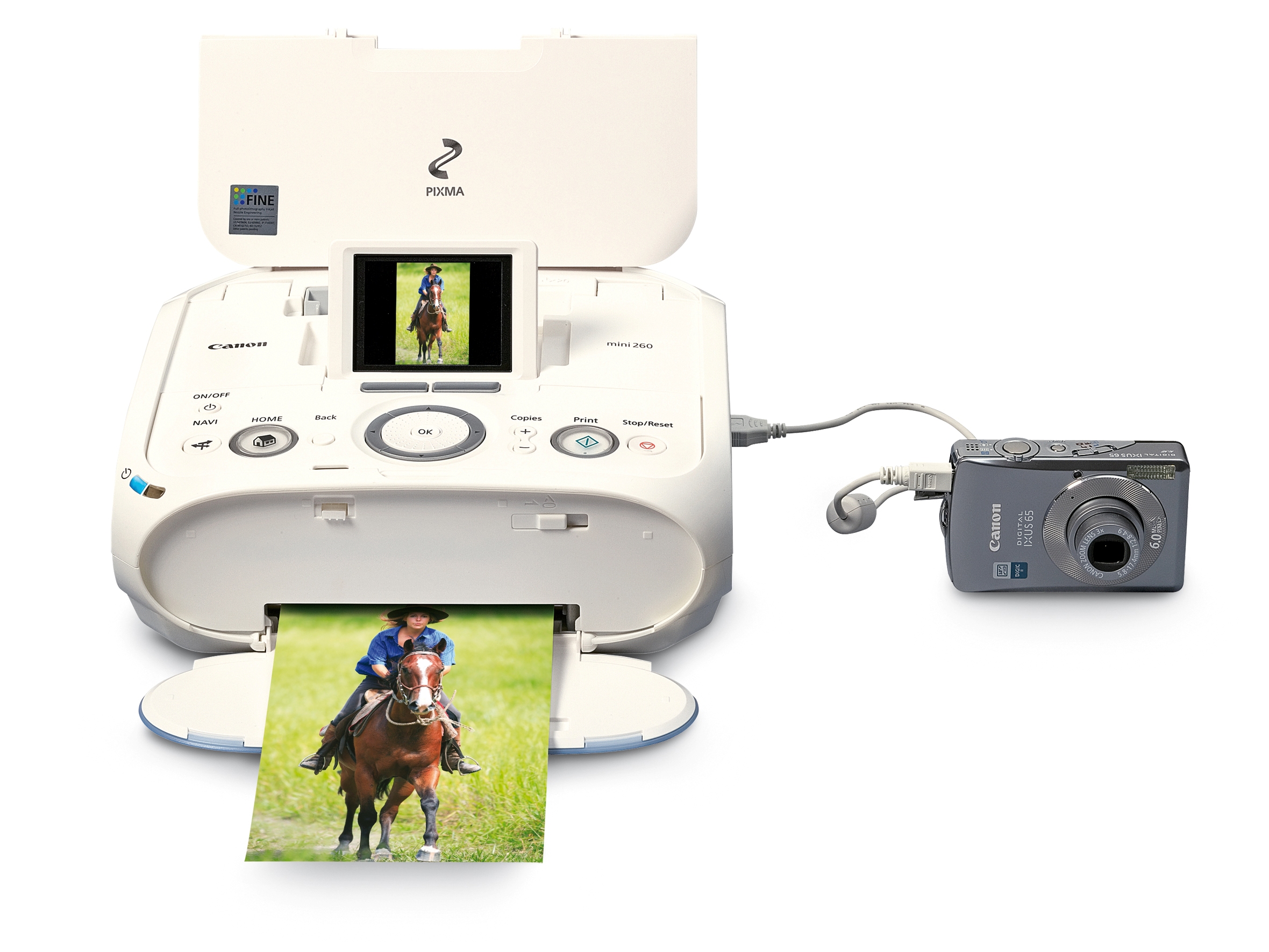TechRadar Verdict
In short, it's the best postcard printer we've ever seen
Pros
- +
Excellent print quality
Versatile connectivity
Cons
- -
Running costs could be pricey
Why you can trust TechRadar
We all know about photo inkjet printers, right? You need at least six different colours of ink to get a wide enough colour space for accurate photo reproduction.
So, with a mere four inks in its arsenal, we almost didn't bother getting the new PIXMA mini 260 in for review. What's strange is that the cartridge bay looks like it's built to take two cartridges, but the printer only uses one cartridge, which combines cyan, magenta, yellow and black inks in one small tank.
What's even more strange, is that the 260 manages to deliver drop-dead gorgeous print quality from its humble four ink line-up, recreating everything from the most vivid colours and high-contrast scenes, to skin tones that have a real vitality and life to them. That's something notoriously hard for many inkjet printers to achieve.
The PIXMA 260 goes about its task at some speed, with borderless 10x15cm photos taking just over a minute to output in our tests. There's a good degree of versatility as well, with connections for USB, PictBridge and IrDA (infrared) all built in, plus a multiformat memory reader. The latter in particular is great to use along with the large and very clear 2.5-inch LCD.
Going the extra mile, Canon has also built a wide range of image enhancement tools into the printer, for aspects like brightness and contrast adjustments, normal or vivid colour settings, face lightening and red-eye removal. All of these are available in standalone print mode, without being connected to a PC, and are easy to get at and adjust thanks to a simple menu system.
Looking at the excellent print quality, it's hard to believe that the 260 uses only four inks in its line-up. From subtle skin tones to vivid, high-contrast photos, the 260 delivered great results every time, with reasonably modest running costs for ink and paper, which worked out at 28p per print.
Sign up for breaking news, reviews, opinion, top tech deals, and more.
Tech.co.uk was the former name of TechRadar.com. Its staff were at the forefront of the digital publishing revolution, and spearheaded the move to bring consumer technology journalism to its natural home – online. Many of the current TechRadar staff started life a Tech.co.uk staff writer, covering everything from the emerging smartphone market to the evolving market of personal computers. Think of it as the building blocks of the TechRadar you love today.
